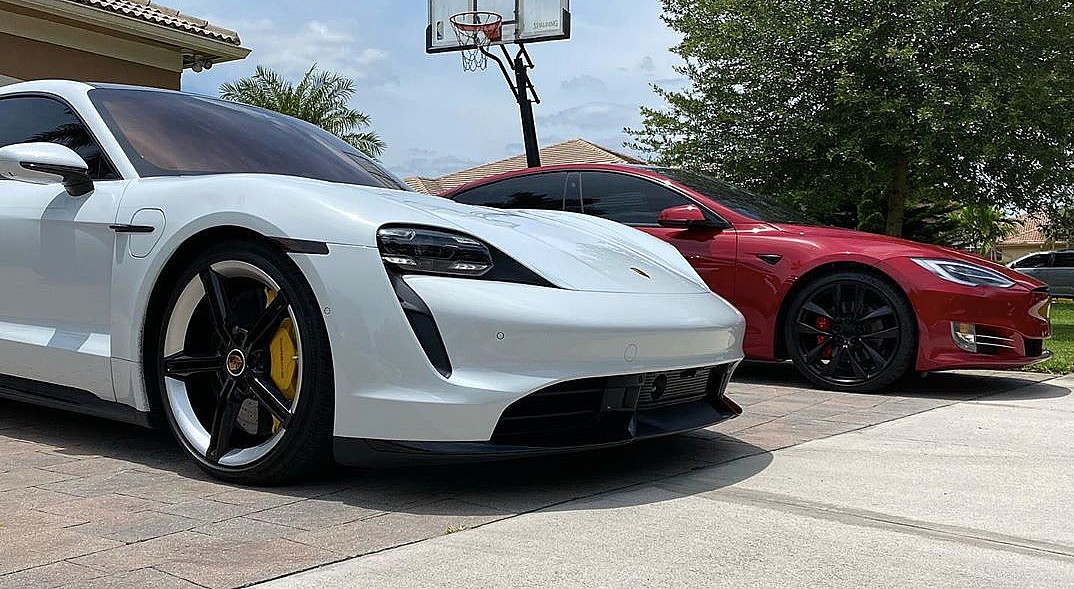
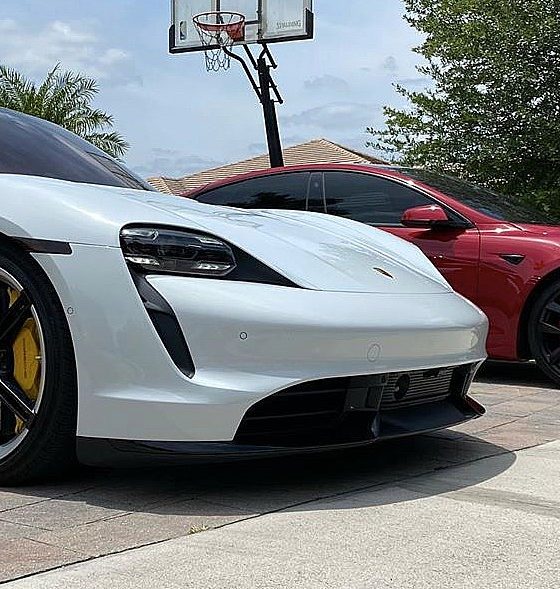
News
Porsche’s software update for the Taycan falls short of Tesla’s over-the-air model
In the years before the Taycan’s unveiling, Porsche stated that the all-electric sedan, then called the Mission E, will feature over-the-air updates. Such a function would provide the all-electric Porsche a comparable ownership experience to Tesla’s vehicles, which receive consistent OTA updates every few weeks.
This was mentioned by Porsche CEO Oliver Blume, who noted that some of the Taycan’s OTA updates would allow a 400-hp version of the Mission E to be bumped to 450 hp. Such statements definitely suggest a Tesla-like update process, but if a recent letter from the German automaker is any indication, it appears that software updates for the Taycan will be a bit more old-fashioned, at least for the time being.
In a letter shared by Nicolas Boehmer on LinkedIn, the automaker stated that OTA updates are only used for the Taycan’s smaller patches for now. When it comes to major updates, Taycan owners would have to drive over to a Porsche Center to have the update manually loaded onto their vehicle. This, according to Porsche, is partly due to the size of the update itself, since physical centers have a high-speed internet line.
“The OTA system is already used for updates of a smaller scope. However, for compound updates such as this one, such a large amount of data is transferred that a smooth update in the Porsche Center is ensured with a high-speed line. Subsequently, the function of all control units is verified with a test. With a technology carrier such as the Taycan, the complexity of the systems is at a very high level, so we decided on this procedure,” the company wrote.
As noted by Mario Herger of The Last Driver License Holder, the size of the software update likely has little to do with Porsche’s decision to conduct manual updates for the Taycan. Tesla, for example, regularly rolls out software updates that are worth hundreds of megabytes or even gigabytes of data, and they are usually downloaded using a mobile network or on a regular home broadband connection without issue. With this in mind, Herger stated that the complexity mentioned by Porsche likely refers to the Taycan’s electronics, which are far more complex than those found in Tesla’s electric cars.
Tesla is vertically-integrated, and it manufactures a significant number of its vehicles’ components in-house. This allows Tesla to simplify its cars’ electronics architecture with relatively few ECUs and AI chips. Traditional automakers do not follow this model, with the Taycan’s electronics reportedly having over 100 ECUs, many of which are from varying manufacturers. This ultimately makes it very difficult to coordinate regular software updates, which likely encouraged Porsche to simply perform the Taycan’s software upgrades manually.
“The coordination of a software update with so many suppliers is certainly no honeypot and the Porsche management seems to have taken the easiest way to periodically order Taycan owners to the workshop for an update. The fact that Porsche itself has to adjust to a rhythm of software updates lasting several weeks is challenge enough. If dozens of suppliers have to be coordinated, the complexity increases enormously,” Herger wrote.
That being said, Porsche still deserves some recognition for actually following through and rolling out a legitimate software update for the Taycan. As the company continues its push for electric vehicles with the Taycan Cross Turismo and the electric Macan, there may be a chance for the automaker to be more vertically-integrated in the near future.

News
Tesla Insurance officially expands to new U.S. state
Tesla’s in-house Insurance program first launched back in late 2019, offering a new way to insure the vehicles that was potentially less expensive and could alleviate a lot of the issues people had with claims, as the company could assess and repair the damage itself.
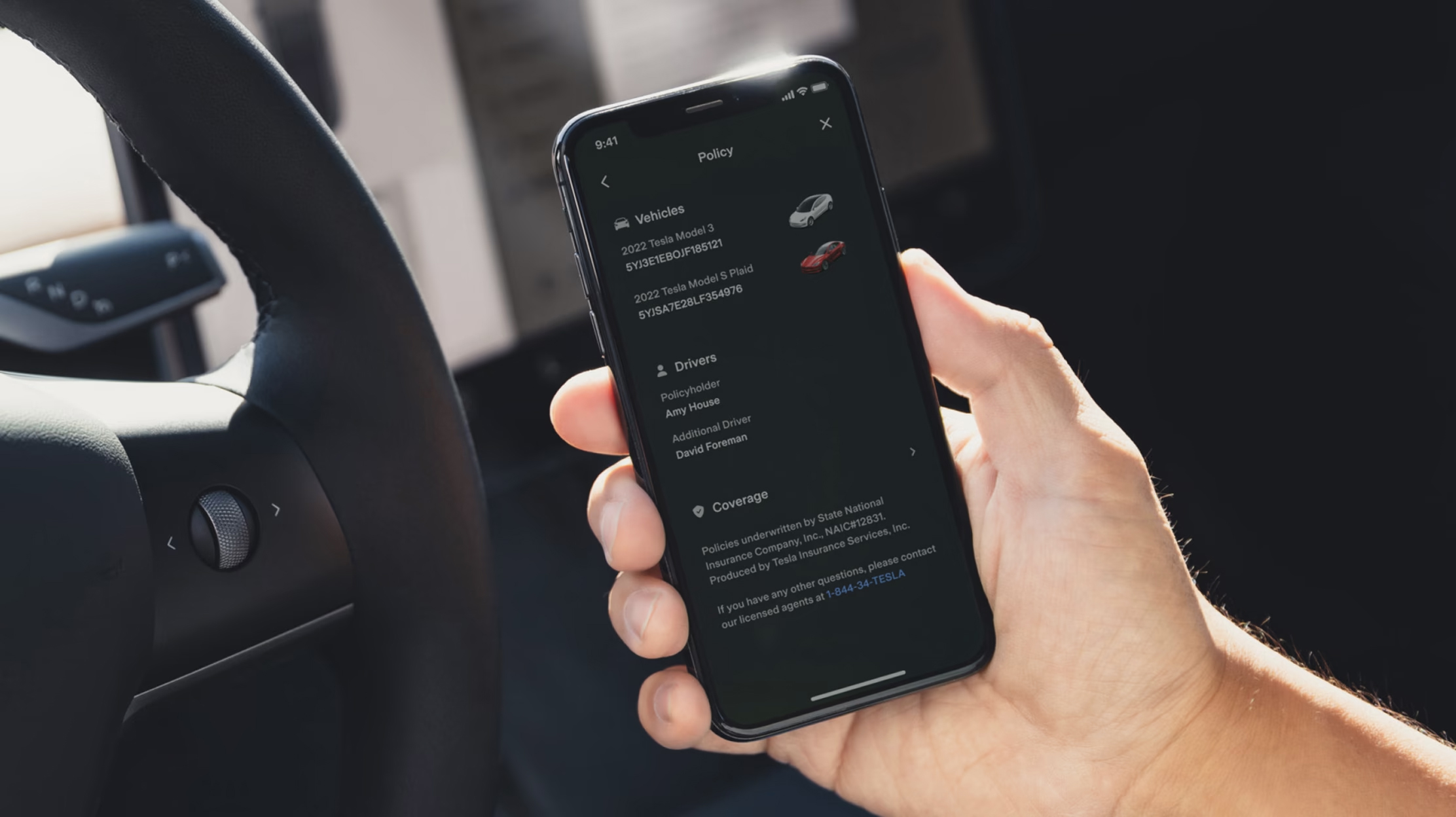
Tesla Insurance has officially expanded to a new U.S. state, its thirteenth since its launch in 2019.
Tesla has confirmed that its in-house Insurance program has officially made its way to Florida, just two months after the company filed to update its Private Passenger Auto program in the state. It had tried to offer its insurance program to drivers in the state back in 2022, but its launch did not happen.
Instead, Tesla refiled the paperwork back in mid-October, which essentially was the move toward initiating the offering this month.
BREAKING: Tesla Insurance has just officially launched in Florida.
This is the first new state to receive @Tesla Insurance in more than 3 years. In total, Tesla insurance is now available in 13 U.S. states (map in thread below of all the states).
Tesla Insurance in Florida uses… pic.twitter.com/bDwh1IV6gD
— Sawyer Merritt (@SawyerMerritt) December 17, 2025
Tesla’s in-house Insurance program first launched back in late 2019, offering a new way to insure the vehicles that was potentially less expensive and could alleviate a lot of the issues people had with claims, as the company could assess and repair the damage itself.
It has expanded to new states since 2019, but Florida presents a particularly interesting challenge for Tesla, as the company’s entry into the state is particularly noteworthy given its unique insurance landscape, characterized by high premiums due to frequent natural disasters, dense traffic, and a no-fault system.
Annual average premiums for Florida drivers hover around $4,000 per year, well above the national average. Tesla’s insurance program could disrupt this, especially for EV enthusiasts. The state’s growing EV adoption, fueled by incentives and infrastructure development, aligns perfectly with Tesla’s ecosystem.
Moreover, there are more ways to have cars repaired, and features like comprehensive coverage for battery damage and roadside assistance tailored to EVs address those common painpoints that owners have.
However, there are some challenges that still remain. Florida’s susceptibility to hurricanes raises questions about how Tesla will handle claims during disasters.
Looking ahead, Tesla’s expansion of its insurance program signals the company’s ambition to continue vertically integrating its services, including coverage of its vehicles. Reducing dependency on third-party insurers only makes things simpler for the company’s automotive division, as well as for its customers.
News
Tesla Full Self-Driving gets sparkling review from South Korean politician
“Having already ridden in an unmanned robotaxi, the novelty wasn’t as strong for me, but it drives just as well as most people do. It already feels like a completed technology, which gives me a lot to think about.”
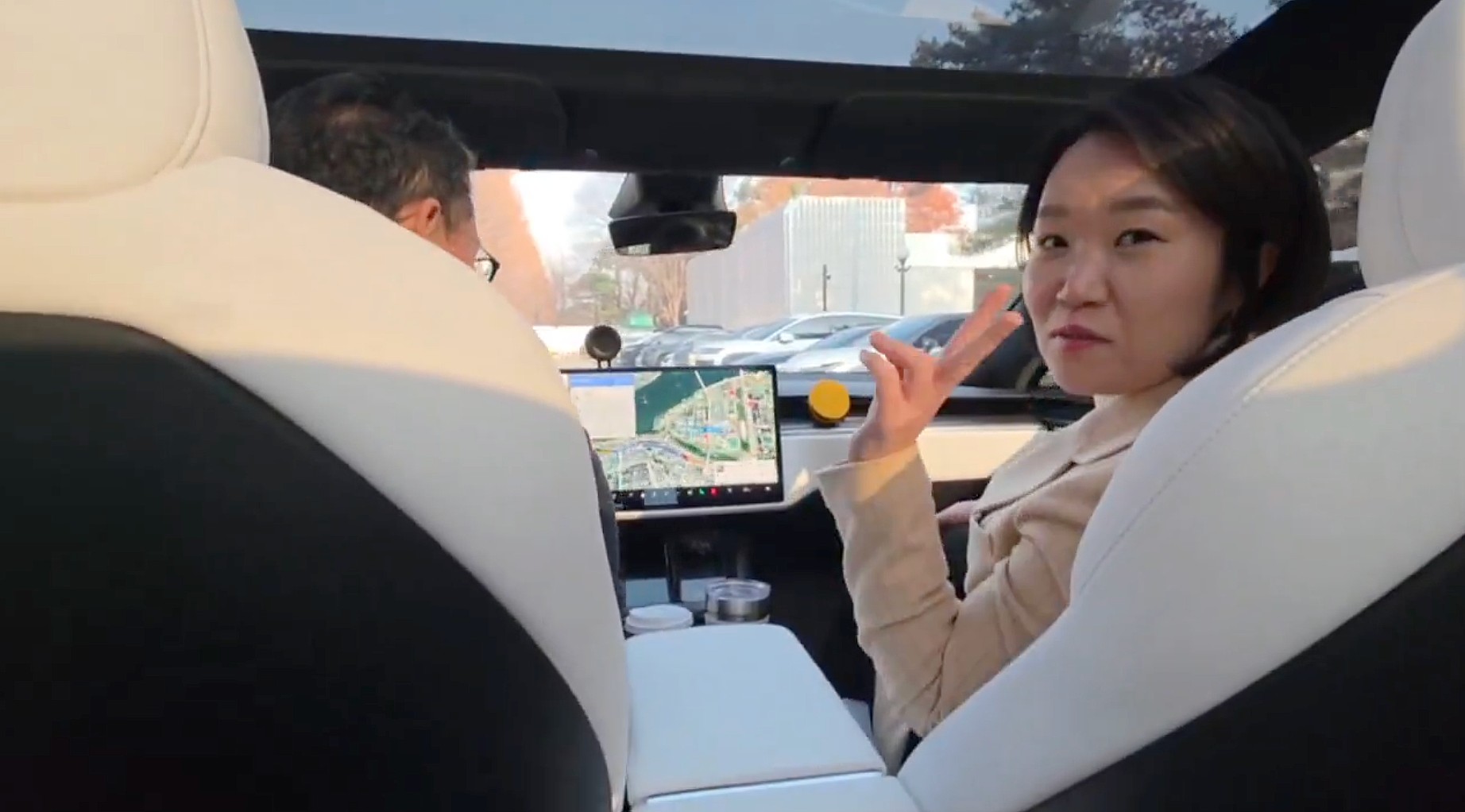
Tesla Full Self-Driving got its first sparkling review from South Korean politician Lee So-young, a member of the country’s National Assembly, earlier this week.
Lee is a member of the Strategy and Finance Committee in South Korea and is a proponent of sustainable technologies and their applications in both residential and commercial settings. For the first time, Lee was able to utilize Tesla’s Full Self-Driving technology as it launched in the country in late November.
Her thoughts on the suite were complimentary to the suite, stating that “it drives just as well as most people do,” and that “it already feels like a completed technology.”
드디어 오늘, 서울에서 테슬라 FSD 체험 했습니다.
JiDal Papa님의 모델S 협찬에 힘입어^^ 파파님 정말 감사합니다.
국회 -> 망원시장 -> 홍익대 -> 국회 복귀 코스였고요.
이미 무인 로보택시를 타봐서 그런지 신기함은
덜했지만, 웬만한 사람만큼 운전을 잘하네요.이미 완성된 기술이라고… pic.twitter.com/8pAidHBpRG
— 이소영 국회의원 (Soyoung Lee) (@im_soyounglee) December 17, 2025
Her translated post says:
“Finally, today I got to experience Tesla FSD in Seoul. Thanks to the Model S sponsored by JiDal Papa^^, I’m truly grateful to Papa. The route was from the National Assembly -> Mangwon Market -> Hongik University -> back to the National Assembly. Having already ridden in an unmanned robotaxi, the novelty wasn’t as strong for me, but it drives just as well as most people do. It already feels like a completed technology, which gives me a lot to think about. Once it actually spreads into widespread use, I feel like our daily lives are going to change a lot. Even I, with my license gathering dust in a drawer, don’t see much reason to learn to drive a manual anymore.”
Tesla Full Self-Driving officially landed in South Korea in late November, with the initial launch being one of Tesla’s most recent, v14.1.4.
It marked the seventh country in which Tesla was able to enable the driver assistance suite, following the United States, Puerto Rico, Canada, China, Mexico, Australia, and New Zealand.
It is important to see politicians and figures in power try new technologies, especially ones that are widely popular in other regions of the world and could potentially revolutionize how people travel globally.
News
Tesla dispels reports of ‘sales suspension’ in California
“This was a “consumer protection” order about the use of the term “Autopilot” in a case where not one single customer came forward to say there’s a problem.
Sales in California will continue uninterrupted.”
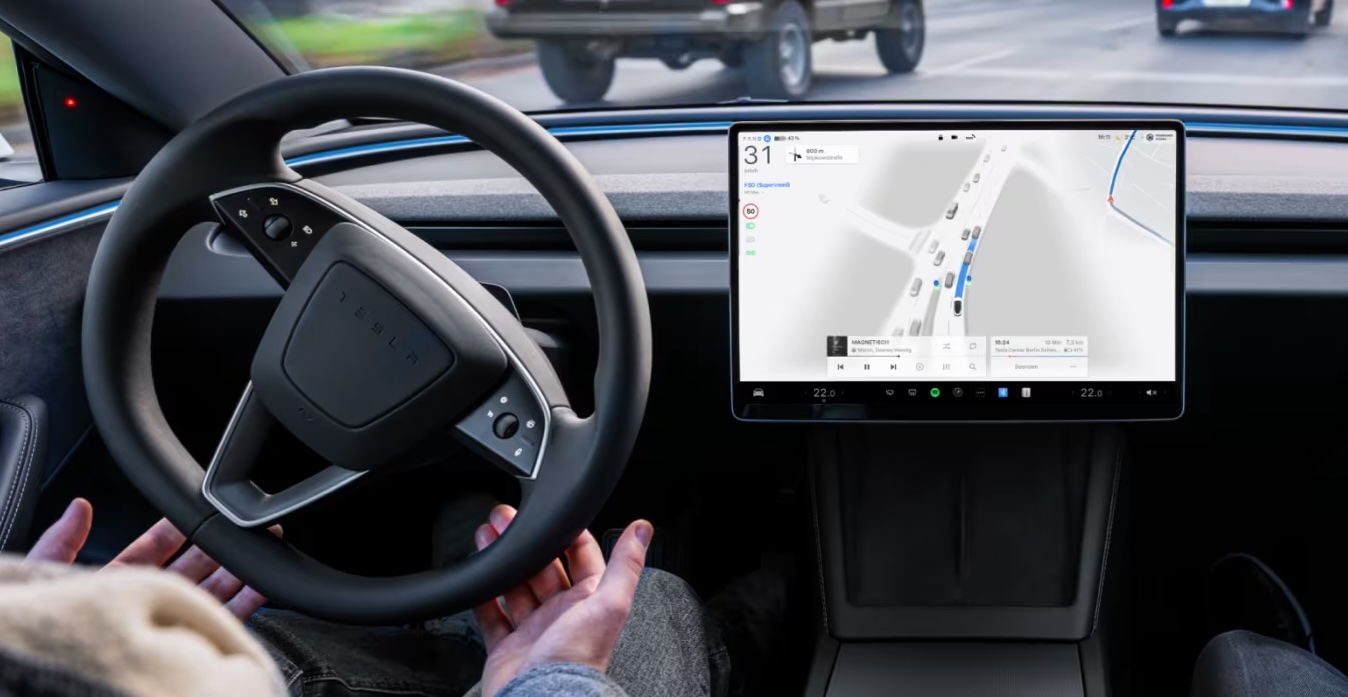
Tesla has dispelled reports that it is facing a thirty-day sales suspension in California after the state’s Department of Motor Vehicles (DMV) issued a penalty to the company after a judge ruled it “misled consumers about its driver-assistance technology.”
On Tuesday, Bloomberg reported that the California DMV was planning to adopt the penalty but decided to put it on ice for ninety days, giving Tesla an opportunity to “come into compliance.”
Tesla enters interesting situation with Full Self-Driving in California
Tesla responded to the report on Tuesday evening, after it came out, stating that this was a “consumer protection” order that was brought up over its use of the term “Autopilot.”
The company said “not one single customer came forward to say there’s a problem,” yet a judge and the DMV determined it was, so they want to apply the penalty if Tesla doesn’t oblige.
However, Tesla said that its sales operations in California “will continue uninterrupted.”
It confirmed this in an X post on Tuesday night:
This was a “consumer protection” order about the use of the term “Autopilot” in a case where not one single customer came forward to say there’s a problem.
Sales in California will continue uninterrupted.
— Tesla North America (@tesla_na) December 17, 2025
The report and the decision by the DMV and Judge involved sparked outrage from the Tesla community, who stated that it should do its best to get out of California.
One X post said California “didn’t deserve” what Tesla had done for it in terms of employment, engineering, and innovation.
Tesla has used Autopilot and Full Self-Driving for years, but it did add the term “(Supervised)” to the end of the FSD suite earlier this year, potentially aiming to protect itself from instances like this one.
This is the first primary dispute over the terminology of Full Self-Driving, but it has undergone some scrutiny at the federal level, as some government officials have claimed the suite has “deceptive” naming. Previous Transportation Secretary Pete Buttigieg was vocally critical of the use of the name “Full Self-Driving,” as well as “Autopilot.”








